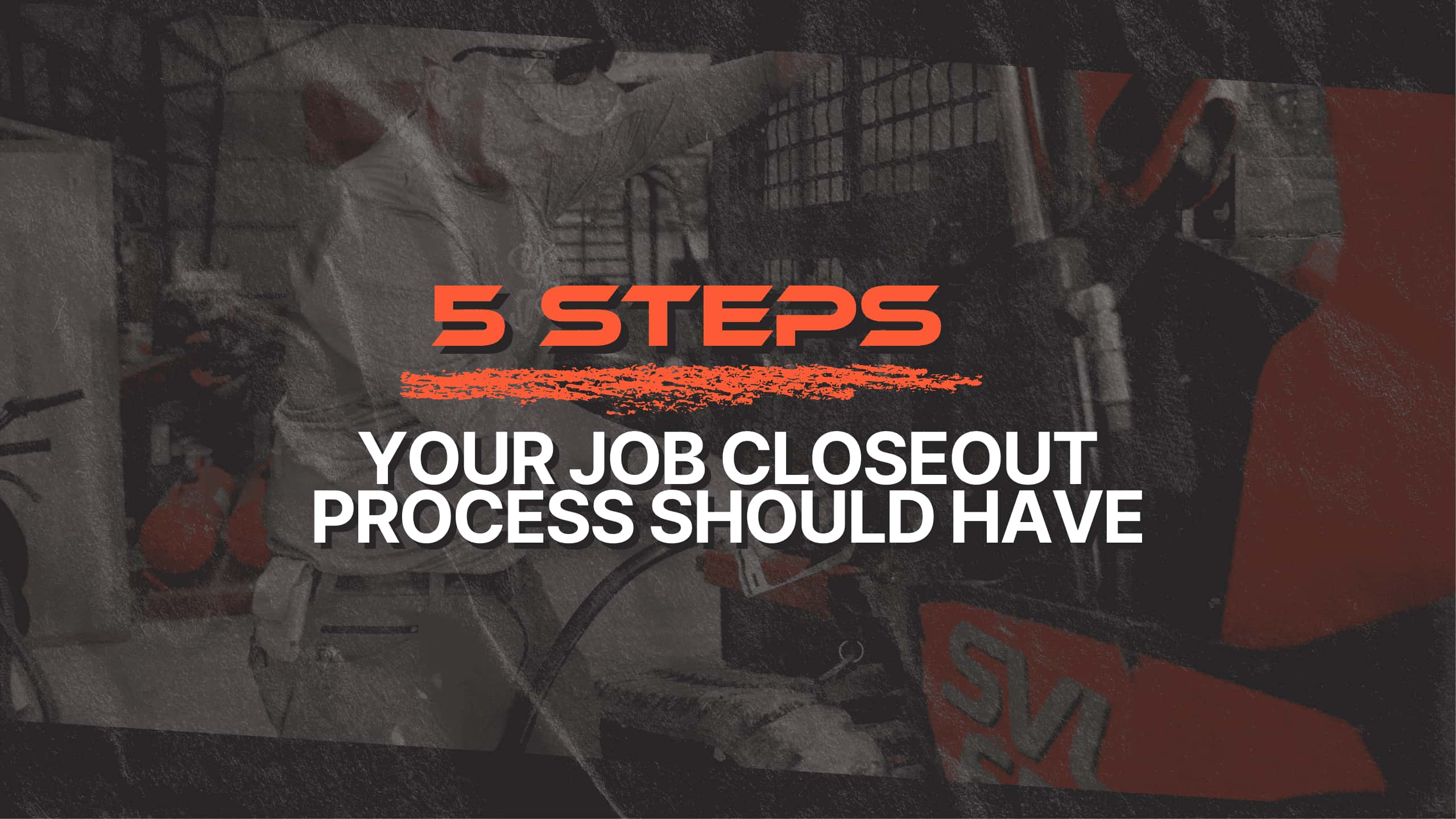5 Steps Your Job Closeout Process Should Have

You feel like you’re controlling chaos, getting proposals back to customers, keeping your jobs moving, coming up with plan B when an employee doesn’t show up, dealing with an upset client… you get the picture.
So…
If that is reality, the last thing you want to hear about is something so neat and orderly like a “job closeout process.”
So why… is that exactly what I’m going to spend the rest of this article talking about?
As contractors – we fight the good fight, but find ourselves putting out fires. (a lot of fires)
And when too much of our life is spent putting out fires, we don’t spend enough time actually thinking, looking at the “map” of where we’re headed.
We find ourselves being addicted to the urgent, instead of giving time for the important.
And a practical example of this is: as soon as I’m finished with one job, I am pedal-to-the-metal on to the next job.
People are waiting. Rain is coming. We gotta get that next job done.
Today, I want to inspire you to slow down to speed up.
How?
Every time we rush on to the next job without stopping to catch a breath, we lose a treasure of an opportunity.
An opportunity to learn from what happened and how things went on this job – to educate ourselves and learn for the next one.
When you rush on to the next job without ever stopping to make sure the prior job got closed out correctly, this is exactly how we:
- miss invoicing for any add-ons, sending the final invoice.
- miss realizing the fact that we’ve underestimated some labor or materials (again).
- miss an opportunity to inform and educate our entire team on how to improve.
- I missed analyzing what we’d do differently on this job if we had the chance to do it again.
- miss an opportunity to collect reviews and blow the customer away with thoughtfulness to the details.
So, let’s wean ourselves off the chaos (at least a little bit)
And let’s slow down to speed up.
First, even if it is a 2-minute thing, I suggest you implement a job closeout process.
Even if all it is, is you scanning your documents for just a sec, and giving yourself a green check mark.
Start.
And here are 5 things I suggest you review in your job closeout process.
- Are all the hours that were worked logged to this job correctly? (So we know how many man hours this job took)
- Is the job completely invoiced? Add-ons, T&M work, etc included.
- Did I look at the estimated vs actual hours with the team and have a quick discussion on what we can learn from this job to improve?
- Are all the receipts and expenses logged to this job correctly?
- Did I send the client a request for a 5 star review? And bonus points if I sent them a little gift.
You can add more, and you likely will add things as your develop this process.
But the main reason I feel those 5 things I mentioned above are so important is that (aside from the review request thing) they all serve as a “rearview mirror.”
They help me make sure I’m getting my money (invoicing).
They help me identify where we messed up on this job, so I can avoid that on the next job.
And massive bonus points if you involve your team in this process.
If you are underestimating hours or materials, guess who has great ideas or perspectives that you may not have?
Your team!
The result of having a process like this should be that you are closer with your team, and constantly implementing little micro learnings.
Adapting and improving.
And when you do that, one day you’ll look up and be amazed at the progress that you’ve made.
If you don’t do that, you’ll be frustrated in the deep miry pit of not understanding where the cash flow issues are coming from, or why the team doesn’t seem to understand the importance of tracking hours and expenses.
The principle to apply here is that I only want things in the job closeout process that help me get better tomorrow.
I am not a fan of busy work for the sake of work.
Or processes for the sake of processes.
The goal is not to play office.
The goal is to learn where we messed up, and how do we fix it next time?
I only want the data that will help me make a better decision tomorrow, everything else is white noise and playing office.
This does not have to take a lot of time.
It should take minutes.
And those minutes will serve you by saving you hours, many hours, in the future.
What’s that quote from Abe Lincoln?
Something about if you have 6 hours to chop down a tree with an axe, spend the first 5 hours sharpening the axe?
Something like that.
You get the idea.
Cheers!
Weston Zimmerman
SynkedUP CEO & founder

